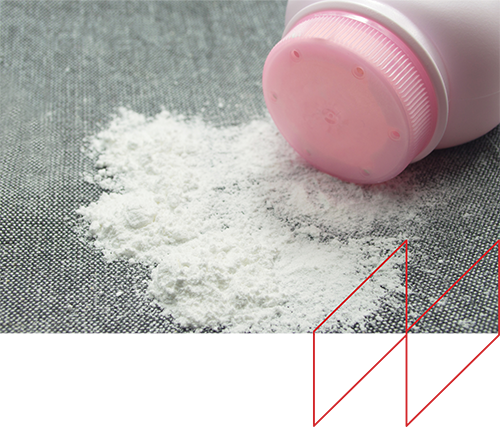BAD DRUG LITIGATION
Elmiron Litigation
Elmiron is a drug that has been prescribed to treat interstitial cystitis (IC), also known as painful bladder syndrome. Since 1996, the drug has been used by millions of patients but there is now reason to believe the drug may cause a serious eye condition in those taking it, which may lead to blindness. Starting in 2015, researchers have begun to discover a potential link between Elmiron and the serious eye disease called maculopathy. As researchers gather more evidence, Elmiron’s manufacturer Janssen Pharmaceutical has failed to warn the public about these risks.
A change in the color of the retina itself
Dark spots in visions
Straight lines turned curved or squiggly
Muted, less vivid colors
Trouble reading
Blurred vision, including in the center of the field of view
A hard time adjusting to dimmer lighting

Eye disease is still not listed as a potential side effect by the manufacturer, despite the evidence researchers have found. Lawsuits on behalf of the injured have already begun. If you or a loved one took Elmiron and have since been diagnosed with maculopathy, you may be eligible for compensation. Contact Alex R. White, PLLC to discuss your case for free: 502.882.7552.

Belviq and Beviq XR
Belviq and Belviq XR (lorcaserin) are weight-loss medications meant to curb hunger and enable people with obesity and weight-related health issues to potentially lose weight. In January 2020, the U.S. Food and Drug Administration (FDA), announced a recall of Belviq and Belviq XR due to evidence linking the drug to an increased risk of cancer. In a five-year, double-blind study of 12,000 patients, those taking Belviq were more likely to develop cancer than those taking a placebo (sugar pill). The FDA stated that while “a range of cancer types was reported, several different types of cancers occur[ed] more frequently in the lorcaserin group,” including:
Pancreatic cancer
Colorectal cancer
Lung Cancer
This drug probably should never have been on the market and the manufacturers need to be held accountable. Those taking Belviq believed they were improving their health but may have potentially been damaging it. If you or a loved one took Belviq and have been diagnosed with cancer, you could be owed compensation for medical costs, pain and suffering, lost wages, and other damages.

Zantac Lawsuit
The U.S. Food and Drug Administration (FDA) has recently announced a recall of Zantac along with all other medications using its active ingredient, Ranitidine. This recall was issued following new research that found the Ranitidine used in medications like Zantac was often contaminated by N-Nitrosodimethylamine (NDMA), a chemical classified as a probable carcinogen by the FDA, the Environmental Protection Agency, and the World Health Organization. According to the U.S. Centers for Disease Control (CDC), NDMA has been linked to a variety of diseases, including severe liver disease, liver cancer, testicular cancer, and lung cancer.
The list of illnesses potentially associated with the consumption of NDMA-contaminated products includes:
Bladder
Kidney
Breast
Liver
Colorectal/intestinal
Lung
Esophageal
Pancreatic
Gastric
Prostate
Zantac is one of the most popular over-the-counter medications in the country, with millions of daily consumers using it to relieve heartburn symptoms and chest pain. It is also a potential cancer risk.
Millions of people have used Zantac for years without knowledge of the risks they were exposing themselves to, and some users are now suffering from cancer that may have been caused by the drug. Zantac’s manufacturer, Sanofi, had a responsibility to ensure that their customers wouldn’t suffer injury from using their product, and they have failed to meet that responsibility.
Zantac users who have suffered injury deserve compensation, and Alex R. White PLLC wants to help them obtain it. If you or a loved one was diagnosed with cancer following Zantac use, call us today for a free consultation. You may be eligible for compensation.
A Growing Danger
The investigation into NDMA contamination of Ranitidine began in 2019. After Valisure, an independent lab, found some evidence of contamination, the FDA and the sellers of Zantac announced a voluntary recall. Zantac was removed from shelves in many places, and the public was advised to stop using it until further notice.
But as the evidence mounted, the FDA was forced to issue a full recall in April 2020. Researchers observed that as stock Ranitidine sat in storage, the NDMA contamination increased. The longer the drug sat, and the hotter the temperature exposure, the worse the contamination got.
At this time, we don’t know how long this dangerous chemical has been contaminating a product that millions of people used every day to treat their heartburn symptoms. Nor are we aware of how many people have suffered severe health problems as a result.
Holding Them Accountable
Zantac’s manufacturers didn’t do enough to keep their customers safe, and they need to be held accountable for their negligence and the damage they’ve caused. If you or a loved one was diagnosed with cancer after using Zantac, compensation could be within reach. Call us today for a free consultation

Talcum Powder Lawsuit
Alex R. White PLLC is reviewing claims on behalf of women who developed ovarian cancer or mesothelioma after using talcum powder and other talc products.
More than 20 studies have linked talcum powder to ovarian cancer since 1971. In 2003, an analysis of 16 of these studies found that women using talcum powder were 33 percent more likely to develop ovarian cancer. It has been alleged that the maker of popular talc-based products, Johnson & Johnson, has known about the ovarian cancer risk since at least 1982, but failed to warn women using these products.
In addition, recently unearthed information reported by The New York Times showed that Johnson & Johnson knew of the possible link between asbestos to their talc products. According to the article, the company spent decades trying to keep this negative information from reaching the public.
A Does Talcum Powder Cause Cancer?
Talc and Ovarian Cancer
The potential link between ovarian cancer and talcum powder has been studied by researchers for decades. It is believed that when talc powder is used near the genitals that it can travel to the ovaries and become embedded in the ovarian tissue. While talc is a natural mineral, it is very difficult for the body to remove the particles and inflammation may occur and cancerous tumors may form as a result.
The first publication to suggest that talc may cause ovarian cancer was published in 1971 in the medical journal The Lancet. Researchers in the study discovered that a majority of ovarian tumors contained talc particles “deeply embedded” in them. Then, in 1982, researchers found that women who used talcum powder during ovulation were at a 92 percent increased risk of developing ovarian cancer. In the following three decades, an additional 21 studies were performed on talcum powder, and almost all of these studies found that women using these products near their genitals were at an increased risk for developing ovarian cancer.
To date, both the National Cancer Institute and the American Cancer Society consider talc use near the genitals to be a “risk factor” for ovarian cancer. Despite this possible link, Johnson & Johnson and other talcum powder manufacturers have not placed warnings about this risk on their products.
Talc and Ovarian Cancer
Hundreds of pages of memos that indicate Johnson & Johnson’s baby powder could potentially be contaminated with asbestos were uncovered among other new information last year. Dating back to 1971, executives have stated concerns about trace amounts of asbestos in their products and that the company should no longer assume that their talc mines were asbestos-free. In one finding, Johnson & Johnson demanded that the government block negative findings from the public. The company eventually won assurances from an official at the Food and Drug Administration stating that the information would only be issued “over my dead body”.

3M Earplugs Litigation
3M Combat Arms double-ended earplugs were used by thousands of military members from 2003 to 2015 in conflict zones such as Afghanistan and Iraq. The 3M earplugs were designed and marketed to the U.S. Department of Defense to combat hearing loss or damage amongst service members.
However, as of 2017, more than 2.7 million veterans were receiving disability benefits for some kind of hearing loss or damage, and more than 20% of all vets who served between 2003 and 2015 are receiving disability benefits for hearing loss or damage.
The 3M earplugs simply did not work. Designed to securely fit inside the ears and prevent the repeated loud noise from penetrating the ear canals and causing hearing damage, the 3M earplugs did not securely seal inside the ear canal. As a result of operating in noisy environments, many service members suffer serious and often permanent hearing loss or damage.
There is serious evidence suggesting that the manufacturers knew about the failures long before they became public. A whistleblower stepped forward in 2018 and warned people of the design flaw. After a U.S. Department of Justice investigation, 3M paid $9.1 million to the federal government to resolve the allegations that 3M knew there was a flaw in the plugs as early as 2000, failed to warn the military, and supplied them anyway as late as 2015. As part of the deal, 3M did not admit any liability and the Justice Department did not make a determination of liability. The earplugs are double-tipped with tips of slightly different sizes, and 3M claimed that by using one tip or the other, every single user would be able to find a perfect seal. The 3M Combat Arms double-ended earplugs have since been discontinued.
As of January 2019, more than 1,000 lawsuits have been filed against 3M. If you or a loved one served in the military and suffered hearing injuries while wearing 3M earplugs, contact Alex R. White, PLLC to learn about what your next steps should be.
Philips CPAP and Sleep Apnea Machines
Dangers of Philips CPAP & Sleep Apnea Machines
Many people who suffer from sleep apnea used a device from Philips Respironics, and instead of it helping them sleep better, it caused cancer in many users. There’s nothing more frustrating than putting your trust in a medical device and a company that claims it can help you, only to have it injure you instead.
If you were injured as a result of the Philips sleep apnea machine, we want to help. [insert law firm] has a team of attorneys to fight on your behalf. Don’t hesitate to reach out to us. Contact Alex R. White, PLLC today for a free case review.
The Issue With Philips CPAP And Sleep Apnea Machines
Philips recalled millions of CPAP and other sleep apnea machines because many users were breathing toxic foam caused by a defect with their machines. Ingesting this toxic foam can cause cancer and other major health problems. Aside from causing cancer, many users also reported headaches, upper airway irritations, coughing, chest pressure, sinus infections, asthma, damage to their liver and kidneys, nausea, vomiting, and increased breathing problems.

This is an advertisement. Alex White is a lawyer licensed solely in Kentucky. Work may be performed by another Attorney. Offices at 904 Minoma Avenue, Louisville, KY 40217 and 2813 Main Street, Hurricane, WV 25526.
This is an advertisement. Alex White is a lawyer licensed solely in Kentucky. Work may be performed by another Attorney. Offices at 904 Minoma Avenue, Louisville, KY 40217 and 2813 Main Street, Hurricane, WV 25526.


Location
904 Minoma Avenue Louisville, KY 40217

Phone
800.929.4486

Fax
502.585.3559

Alex@arwhitelaw.com
All rights reserved by Alex White. Copyright 2025. Website design by SuBo.


Location
904 Minoma Avenue Louisville, KY 40217

Phone
800.929.4486

Fax
502.585.3559

Alex@arwhitelaw.com
All rights reserved by Alex White. Copyright 2023. Website design by SuBo.
